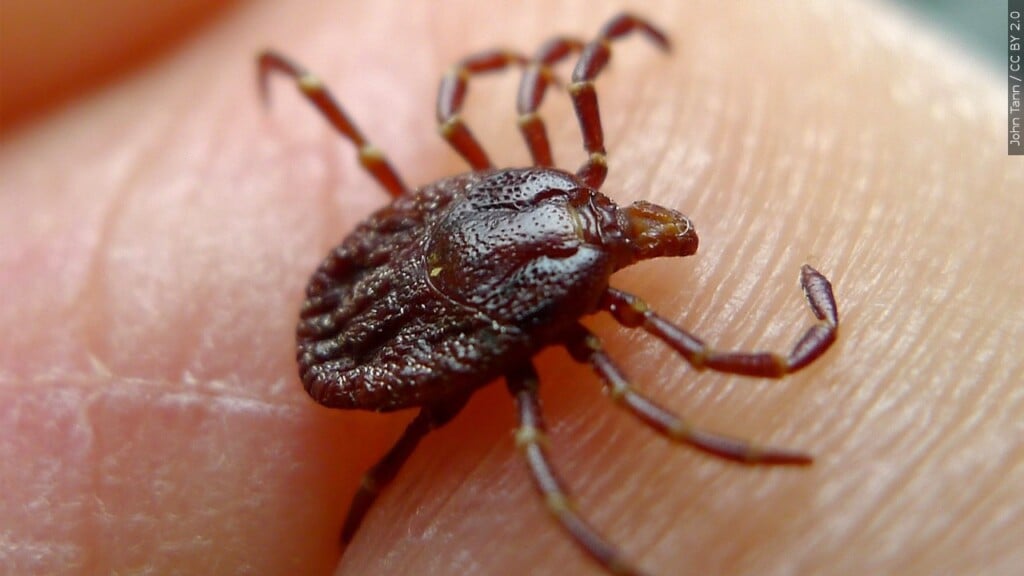Ticks, snakes pose health risks as warm season activity increases, doctor warns
MACON, Georgia (41NBC/WMGT) –As Middle Georgians spend more time outdoors this summer, a local physician is urging caution when it comes to two often-overlooked hazards: ticks and snakes.
“Ticks, you need to be wary of them because they carry lots of diseases,” said Dr. Nicholas Michalakis, an internal medicine resident at Piedmont Macon.
He explained that in the Middle Georgia area, deer ticks—also known as blacklegged ticks—pose the greatest concern because they can transmit Lyme disease. “That’s the, uh, same tick that spreads Lyme disease,” he said.
While Lyme disease is far more prevalent in the Northeast—where “up to 50% of the ticks can carry” the bacteria—Michalakis said infection is still possible in the South, with local prevalence rates ranging from “1 to 5%.”
Symptoms of Lyme disease include fever, chills, flu-like symptoms, and a distinctive bullseye-shaped rash. “Of course with Lyme disease, you know that there’s the rash—a bullseye rash—and fever, chills, and other flu-like symptoms,” he said.
But Lyme disease isn’t the only tick-borne illness of concern in the region. “Other ticks to be mindful about are dog ticks, which can spread Rocky Mountain spotted fever.” That illness typically “starts as a rash on the extremities and then goes towards the center of your body,” he noted.
Michalakis also warned about the lone star tick, named for the white star-shaped marking on the back of female ticks. “That causes alpha-gal syndrome, which is that meat allergy that you may hear about in the news lately,” he said. “It’s caused by an allergen in the tick saliva actually. It’s not an actual infectious organism per se.”
What to do if you find a tick
When it comes to tick bites, swift action is important. “It’s definitely a great idea to remove it, because the longer the tick stays on and it’s embedded in your skin, the chance of it, you know, transmitting any sort of infectious organism increases,” Michalakis said.
He advised using sterilized fine-tip tweezers to remove the tick. “The key is to grasp the tick—the body of the tick—and then pull gently in an upward direction and with a steady motion,” he said. “You don’t want to twist or turn while you’re removing the tick, because that can allow some of the mouth parts to be embedded… and that can lead to an infection at the site.”
While tick bites can be unsettling, Michalakis said there’s usually no need to head to the emergency room. “No, and that’s definitely not necessary. We don’t want to inundate the emergency rooms or the urgent cares with this,” he said. “You don’t need to seek care unless you start seeing symptoms. And symptoms may start developing in 3 to 30 days after the bite.”
He also recommended using your phone to photograph the tick for potential identification later. “Nowadays phones have a macro feature so you can zoom in quite nicely and get all the details of the tick just for identification purposes,” he said.
Dealing with venomous snake bites
Snakes are another common concern during the summer, especially in wooded or brushy areas.
Michalakis noted that while Georgia is home to several venomous species, most snakes—venomous or not—are not aggressive. “Snakes are usually harmless, even the venomous ones. And they’re more scared of us than we really are of them—although sometimes that may not be true,” he said.
In the event of a venomous snake bite, older advice like tying a tourniquet or applying ice can do more harm than good. “That’s actually proven to worsen it, because it can cause ischemia—or lack of blood supply to that limb—and that can worsen the outcome,” he said.
Instead, he advised calling 911 immediately and moving away from the snake to avoid another bite. “The next thing to do is to keep the affected limb—the limb that’s been bitten—at the heart level or lower. That can slow the venom from spreading,” Michalakis said. “You can lay down if you’d like as well. That helps.”
Prevention and awareness
Above all, Michalakis emphasized the importance of prevention and environmental awareness.
“The big thing is prevention and paying attention, right? Being aware of your surroundings,” he said. “If you’re going to be hiking in an area that is overgrown with a lot of brush, just be mindful that you may encounter a snake.”
If you do see a snake, Michalakis advised calling park officials instead of trying to handle it yourself. “I don’t recommend you remove them or try to harm the snake either, because they are beneficial,” he said.












